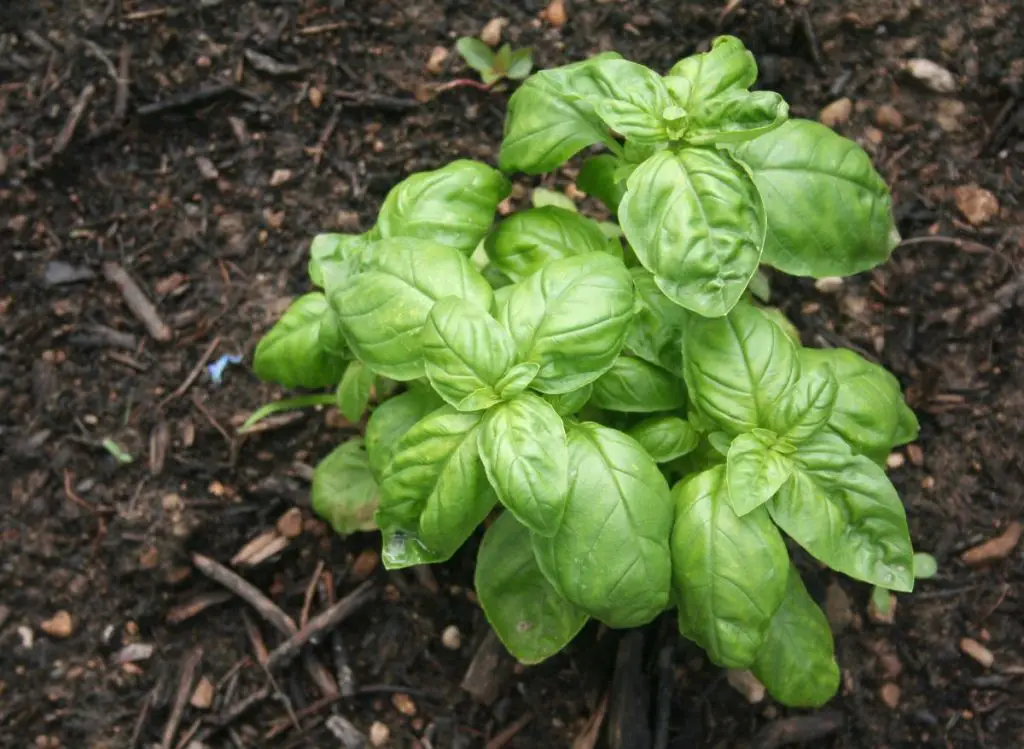Basil plants are among the most popular and easiest herbs to grow and care for. Basil’s leaves are commonly used in cooking, but their flower buds are also edible. So, how long does basil plant last?
Basil plant is both annual and perennial, meaning it will last one year or longer depending on the growing conditions. In frost-free areas, a basil plant behaves as a short-lived perennial. However, basil may survive for two years in warm climates before replanting.
In addition, basil plants are generally sensitive to cold weather and frost. New basil plants are generally ready for pruning in six weeks with sufficiently warm weather. You need to take a few steps to preserve your plant for the following year.
Read on to find out everything you need to know to properly grow basil plants, including factors affecting their lifespan and the most popular basil plant varieties.
See also: The Most Effective Ways To Speed Up Pepper Seed Germination

How Long Does Basil Plant Last?
The basil plant’s lifespan varies depending on how you take care of it. If it is grown indoors with less threat from cold winters, basil plants may survive for six months. However, basil plants live for about four to five months in warm, sunny conditions if grown on the ground.
In some cases, a basil plant may last longer with proper growing conditions, including full sun and steady warm temperatures when planted indoors. Generally, all types of basil thrive in gardens and containers and in warm and sunny weather.
Overview Of Basil Plant Characteristics
Originated from tropical Africa and Asia, basil plants thrive in full sun and moist, well-drained soils. You can easily transplant basil plants and the best time to transplant them is after the last frost.
To increase your increase of extending a basil plant’s lifespan, you will need to replicate its growth conditions and requirements.
plantsheaven.com
The table below shows basil plant characteristics.
| Scientific Name | Ocimum basilicum |
| Common Names | – Basil – Genovese Basil – Saint Joseph’s Wort – Purple Basil – Thai Basil – Sweet Basil |
| Phonetically Spelled as | OH-sih-mum bass-IL-ih-kum |
| Family | Mint family (Lamiaceae) |
| Species | Basilicum |
| Life Cycle | – Annual – Perennial |
| Plant Type | – Annual – Herbaceous Perennial – Edible – Perennial – Herb |
| Basil Plant Size | – Height: 0 ft. 4 inches to 3 ft. 0 inches – Width: 0 ft. 4 inches to 1 ft. 2 inches |
| Basil Plant Maintenance requirements | Low |
| Temperature requirements | Basil plants thrive at 80 to 90 degrees F (27 to 32 degrees C) |
| Required pH | Basil plants grow well with a pH between 6.0 to 7.5 |
| Sun exposure | – Basil plants grow well in full sun with at least 6 hours of direct sunlight a day. – In very hot climates, basil plants will also survive in partial shade with 2 to 6 hours of direct sunlight, only part of the day. |
| Soil Drainage for Basil Plants | Basil plants do well in moderately rich soil with good drainage and moisture. |
| Basil Plant Propagation method | – Seed – Stem Cutting |
| Basil plant Fertilizer Requirements | – For indoor plants and basil grown outside in containers every three to four weeks, use liquid fertilizer at 1/2 of the suggested strength every four to six weeks. – Fertilize basil plants infrequently with a 5-10-5 commercial fertilizer once or twice during their growing season. |
| Insects, Diseases, and Other Basil Plant Problems | – Aphids and Japanese beetle are rare insect problems. – Basil plants are susceptible to fusarium wilt and basil downy mildew. |
| USDA Plant Hardiness Zone | 10 to 11 |
| Region Of Origin | Tropical Africa and Asia |
Factors Affecting Basil Plants’ Lifespan
Generally, how long a basil plant lives depends on its environment. And, since basil plants originated in hot and humid, your basil plant will thrive and live a long, healthy life if you can replicate their origin conditions.
1- Watering
Overwatering and underwatering basil plants can shorten their lifespan. Sometimes, overwatering can cause infections, scorch the leaves, or mold or mildew.
- Water thoroughly every seven to ten days to ensure the roots receive enough moisture.
- Choose a container with holes in the bottom for appropriate drainage whenever planting basil indoors.
2- Temperature
Basil plants grow well between 80 to 90 degrees F (27 to 32 degrees C). The higher the temperature, the stronger and healthier your basil plants will grow.
3- Sun Exposure or Lighting
To thrive and live longer, basil plants require plenty of bright light. To increase the amount of light, your basil receives, you can put it under artificial lights for 10-12 hours per day.
- Basil plants do well in full sun with at least six hours of direct sunlight daily.
- In scorching climates, basil plants will also survive in partial shade with at least 2 to 6 hours of direct sunlight, only part of the day.
4- Soil Condition
The best way to increase your basil plant lifespan is to replicate their ideal growing conditions, including moderately rich soil with good drainage and moisture.
Choose a well-draining, light, and moderately rich compost mix.
5- Pest, Insects, and Disease
Pest, insects, and diseases can also affect how long plants last. The most common basil plant problem is basil downy mildew, which causes fluffy growths on the bottom of leaves, and eventually kills entire plants.
See also: The Top Reasons Your Zucchini Is Turning Yellow and Rotting.
How To Plant Basil Plant
There are two main ways to plant basil: direct seeding and seeding indoors
- Ensure you plant basil seeds directly into the ground only after the danger of spring frosts has passed.
- Plant basil seeds evenly and carefully cover them with one-fourth of an inch of soil.
- Generally, seeds will germinate within five to seven days.
- After they have developed about two to three pairs of true leaves, transplant seedlings to be 6 to 12 inches apart.
- Use 2 to 3 inches of mulch of grass clippings or compost to help retain soil moisture and minimizes weeds around your basil plants.
- When starting basil seeds indoors, ensure you sow them six to eight weeks before transplanting them outside to start the growing season. This is particularly helpful for some slower-germinating varieties.
- Basil plants are very tender plants. Succeeding in growing basil plants will depend on the soil and watering. If you overwater basil plants, their roots tend to rot, and they will die off.
- Basil needs friable loose well-fertilized soil that retains only moisture and does not keep damp. If the ground is not free draining, water will build up in the soil, affecting the roots.
- Don’t water your basil plants like you water other plants—water basil plants only when needed.
Best Varieties of Basil and Their Characteristics
Choosing a variety resistant to this disease is essential to reduce the risk of basil downy mildew.
| Names | Genus name | Characteristics | Dimensions | Maintenance requirements |
| Sweet basil | Ocimum basilicum | – Sweet basil is the most popular variety. It is generally used for culinary purposes, including pesto and tomato dishes. It is a tender annual plant that has a spicy odor and flavor. – Sweet basil is quickly grown from seed or tip cuttings of overwintered basil plants. – Sweet Basil requires a warm and sunny location to thrive. | 12 to 18 inches tall | Low to medium |
| Spicy Globe basil | Ocimum basilicum | Spicy Globe basil is an excellent indoor plant because of its small and compact plant size. | 8 to 10 inches | It requires low to medium maintenance |
| Lettuce Leaf basil | Ocimum Crispum | – Lettuce leaf basil has large, crinkled green leaves with a sweeter flavor than other types of basil. – It is also a very vigorous grower, according to the University of Minnesota. | It grows about 15 inches | It requires minimum maintenance |
| Thai basil | Ocimum basilicum | – Thai basil is stronger-flavor basil than sweet basil. – Thai basil thrives in a sunny spot with fertile, well-drained soil. Before re-watering basil plants, allow the plant to dry slightly. – You can grow Thai basil indoors near a sunny window with at least 6 hours of sunlight daily. | It grows to 24 to 36 inches | It requires a little maintenance |
| Lemon basil | Ocimum basilicum | – Lemon basil plants require full sun in a raised bed or other sites with warm soil. – It takes about 8 to 14 days for lemon basil to germinate. | 12 to 18 inches | Lemon basil is easy to grow if you provide it with plenty of sun and heat. |
| Cinnamon basil | Ocimum sp. | – Cinnamon basil, referred to as Mexican basil, is native to tropical and subtropical climates. – Cinnamon basil plants do well when temperatures are between 80 to 90 degrees Fahrenheit (about 27 to 32 Celsius) | Cinnamon basil plants grow up to 18 inches tall. | Cinnamon basil requires very little maintenance |
| Opal basil | Ocimum basilicum | – Opal basil is a versatile basil variety that has red-purplish foliage and pink flowers. – Most gardeners plant opal basil for ornamental purposes. | It grows between 12 to 18 inches | Opal basil also has low maintenance requirements |
Wrapping Up
Overall, basil plants (as an annual plant) can live indoors year-round when planted correctly and stop them from bolting. Basil is an excellent plant to add to your garden because it is versatile and edible.
To thrive, basil plants require:
- Proper watering
- Adequate sun exposure
- Rich and well-drained soil
Follow the steps outlined in this article to keep your basil plant year around.


